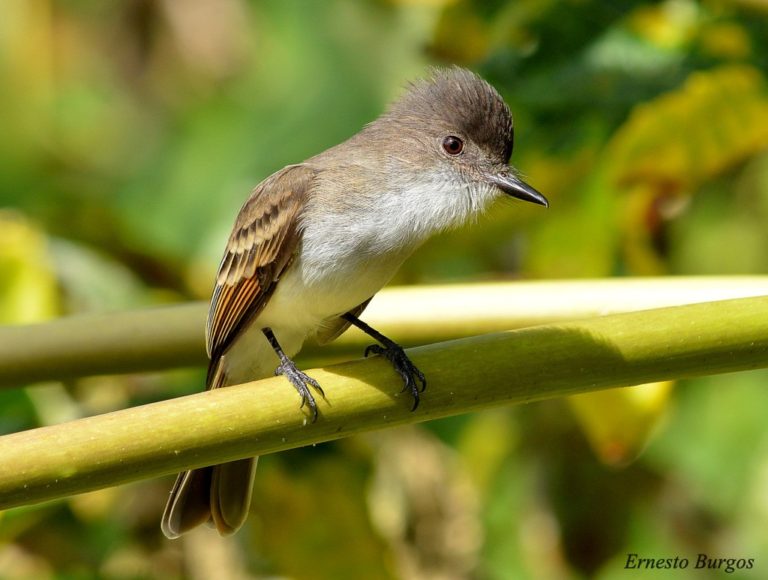Birdfinding.info ⇒ Very common across Puerto Rico and Vieques, where it seems to occupy all wooded habitats to some extent. Especially conspicuous at lowland forest sites such as Cabo Rojo National Wildlife Refuge and Cambalache and Guánica State Forests. Also easy to find at mangrove and semiopen sites such as La Parguera, Laguna Cartagena National Wildlife Refuge, and Humacao Natural Reserve. Occurs in patches of natural habitat within San Juan.
Puerto Rican Flycatcher
Myiarchus antillarum
Family: Tyrannidae
Endemic to Puerto Rico and the Virgin Islands. Widespread and common across Puerto Rico, Vieques, and St. John. Uncommon or rare on Culebra, St. Thomas, Jost Van Dyke, Tortola, Virgin Gorda, Anegada, and some of the smaller islands.
Most numerous in coastal lowlands in dry forest, scrub, mangrove, and semiopen woodlands, but also fares well in wetter habitats and at higher elevations.
Identification
A mid-sized Myiarchus with an ashy-gray throat, pale yellowish or whitish belly, three buffy wingbars, whitish margins on the tertials, and bright rufous edging on the secondaries and primaries. Often appears large-billed and bull-headed.
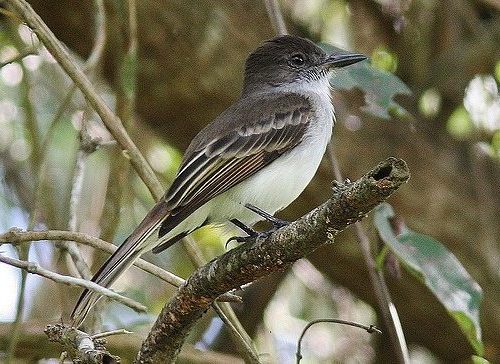
Puerto Rican Flycatcher, an individual with generally cold coloration. (Laguna Cartagena National Wildlife Refuge, Puerto Rico; January 2, 2015.) © Jim Tietz

Puerto Rican Flycatcher, with typical coloration, showing whitish margins on wing feathers—note kingbird-like posture and shape. (Rancho Vegas, Cayey, Puerto Rico; March 19, 2017.) © José Santiago
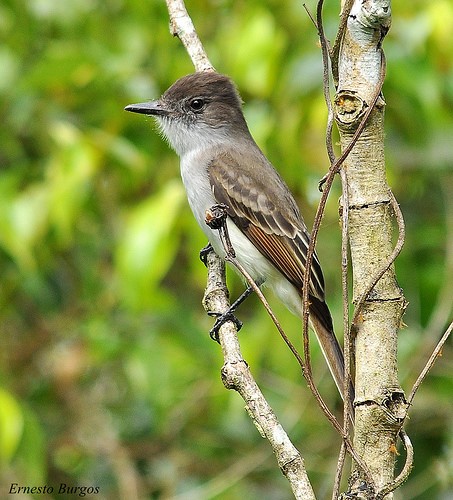
Puerto Rican Flycatcher, with typical coloration, showing three muted wingbars and rufous margins on primaries and secondaries. (Barrio Naranjo, Comerío, Puerto Rico; April 22, 2009.) © Ernesto Burgos
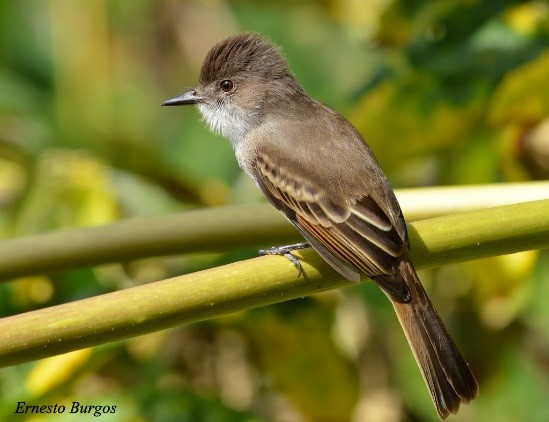
Puerto Rican Flycatcher, an individual with generally warm coloration showing buffy wingbars and rufous margins on primaries. (Barrio Naranjo, Comerío, Puerto Rico; September 24, 2013.) © Ernesto Burgos

Puerto Rican Flycatcher, showing generally olive-brown upperparts. (Boquerón National Wildlife Refuge, Puerto Rico; March 25, 2017.) © Nick Dorian
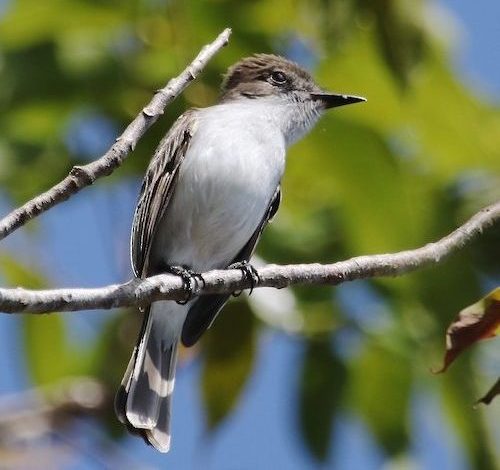
Puerto Rican Flycatcher, showing essentially pure-white underparts. (Humacao Natural Reserve, Puerto Rico; March 1, 2017.) © Gil Ewing

Puerto Rican Flycatcher, frontal view of an individual with unusually rusty-brown upperparts and yellowish underparts, and crest raised. (Barrio Naranjo, Comerio, Puerto Rico; May 12, 2014.) © Ernesto Burgos

Puerto Rican Flycatcher, presumably juvenile with extensively rusty upperparts. (Cabo Rojo National Wildlife Refuge, Puerto Rico; June 23, 2013.) © Ernesto Burgos
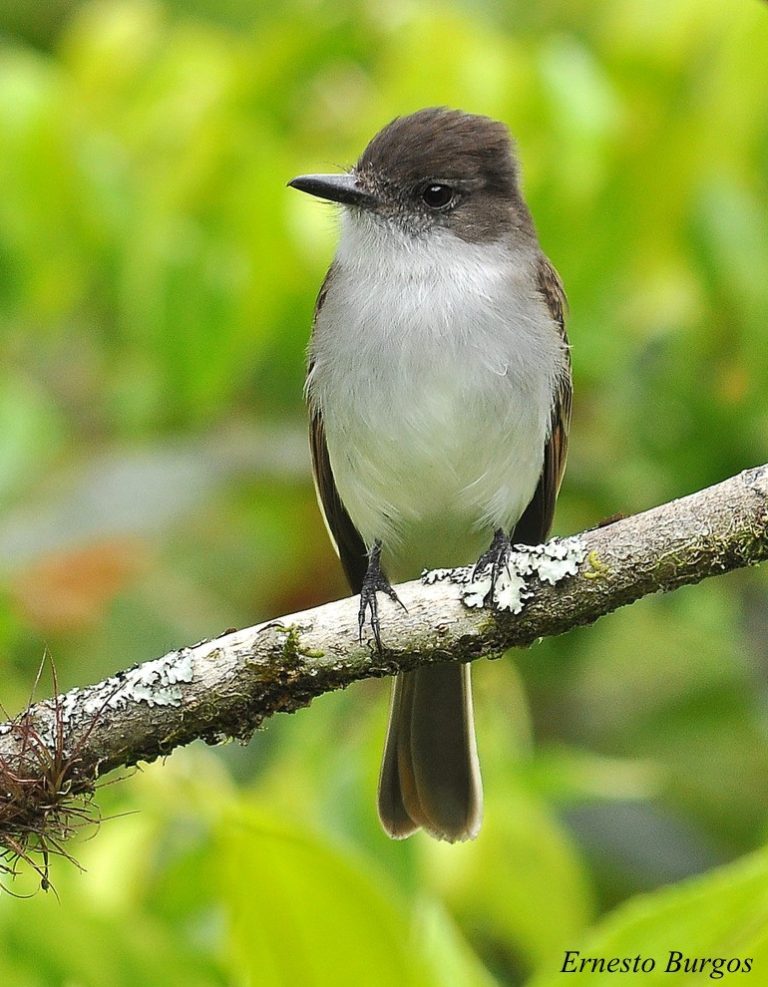
Puerto Rican Flycatcher, showing typically whitish-gray breast and a slight yellowish tinge on the belly. (Barrio Naranjo, Comerío, Puerto Rico; April 22, 2009.) © Ernesto Burgos

Puerto Rican Flycatcher, an individual with unusually rusty-brown upperparts and yellowish underparts. (Barrio Naranjo, Comerío, Puerto Rico; May 12, 2014.) © Ernesto Burgos
Cf. Puerto Rican Kingbird. Puerto Rican Flycatcher and Puerto Rican Kingbird can be difficult to distinguish in isolation except by voice, as both are medium-to-large flycatchers with whitish underparts and brownish upperparts. Especially in strong light, the two species can appear very similar from almost any angle of view.
They convey different overall impressions. The kingbird is larger, heavier, bolder, and more likely to perch in the open. The flycatcher typically perches somewhat lower and shows brown in its cap, whereas the kingbird has a distinctly blackish cap.
Notes
Monotypic species.
Formerly considered conspecific with Stolid, La Sagra’s, and Lesser Antillean Flycatchers, collectively the Stolid Flycatcher, M. stolidus.
References
Cox, W.A. 2010. Puerto Rican Flycatcher (Myiarchus antillarum), version 1.0. In Neotropical Birds Online (T.S. Schulenberg, ed.). Cornell Lab of Ornithology, Ithaca, New York. https://doi.org/10.2173/nb.purfly1.01.
eBird. 2018. eBird: An online database of bird distribution and abundance. Cornell Lab of Ornithology, Ithaca, N.Y. http://www.ebird.org. (Accessed November 8, 2018.)
Joseph, L. 2017. Puerto Rican Flycatcher (Myiarchus antillarum). In Handbook of the Birds of the World Alive (J. del Hoyo, A. Elliott, J. Sargatal, D.A. Christie and E. de Juana, eds.). Lynx Edicions, Barcelona. http://www.hbw.com/node/57515. (Accessed October 31, 2017.)
Joseph, L., T. Wilke, E. Bermingham, D. Alpers, and R. Ricklefs. 2004. Towards a phylogenetic framework for the evolution of shakes, rattles, and rolls in Myiarchus tyrant-flycatchers (Aves: Passeriformes: Tyrannidae). Molecular Phylogenetics and Evolution 31:139-152.
Lanyon, W.E. 1967. Revision and probable evolution of the Myiarchus flycatchers of the West Indies. Bulletin of the American Museum of Natural History 136:329-370.
Raffaele, H. 1989. A Guide to the Birds of Puerto Rico and the Virgin Islands. Princeton University Press, Princeton, N.J.
Raffaele, H., J. Wiley, O. Garrido, A. Keith, and J. Raffaele. 1998. A Guide to the Birds of the West Indies. Princeton University Press, Princeton, N.J.
